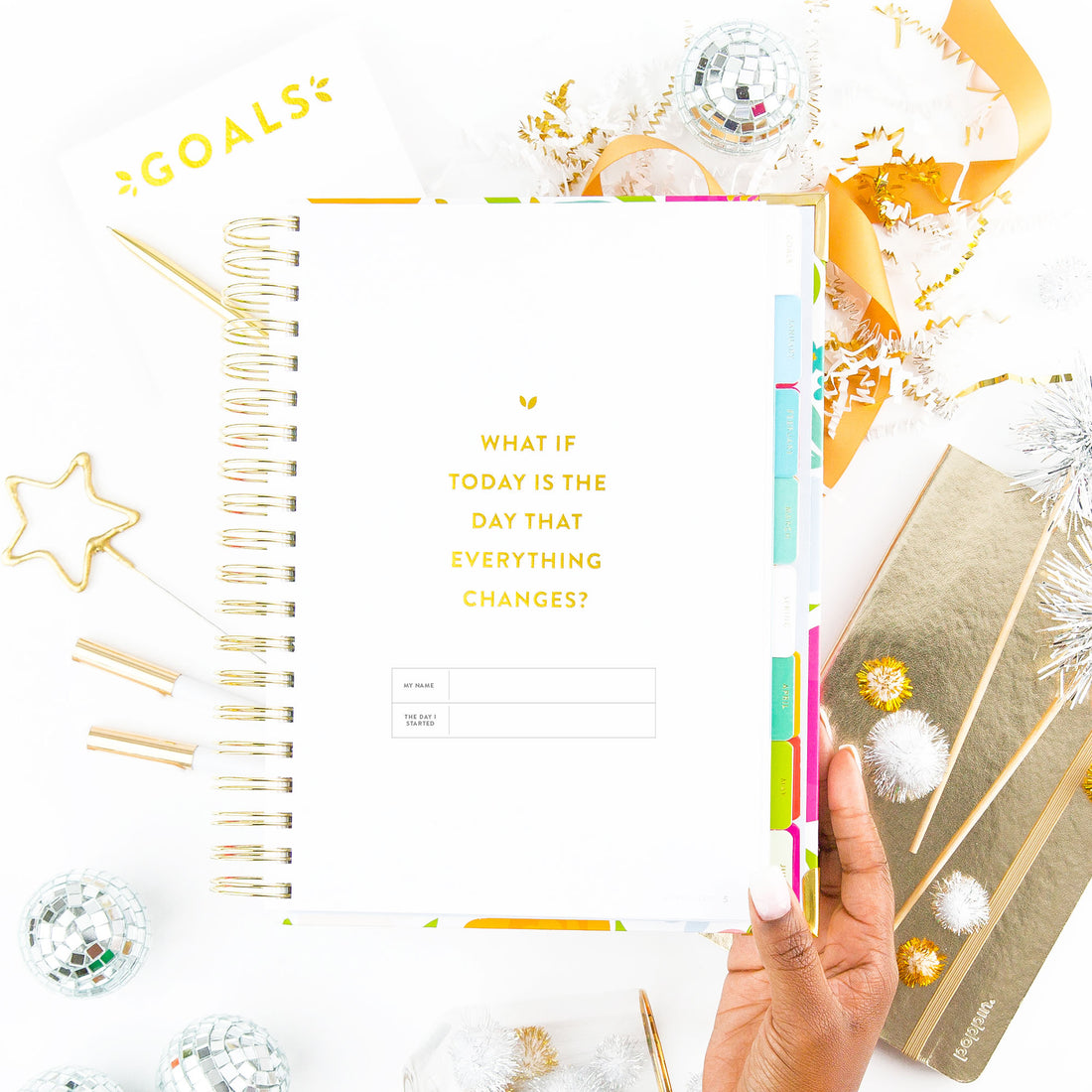Friends, we've got a treat for you today! Continuing this week's focus on your health and wellness goals, we've got a guest post from our friend (and PowerSheets® user!) Robin Long of The Balanced Life online Pilates community. She's outlining a few simple ways to set yourself up for success with these goals, and they're applicable whether you're focusing on exercise, meal planning, mental health, or any other aspect of wellness. Enjoy!
The new year is a perfect time to focus on your health and wellness goals. It’s a fresh start, a new beginning, and an ideal time to make those changes you’ve been wanting to make.
As a Pilates instructor and Creator of The Balanced Life, I help women find time for themselves in the midst of very busy lives and provide a realistic way to get fit and feel good.
When leading women through my programs, I often ask them to tell me their goals. More often than not, I receive responses that I know are bound to fail.
Why? Not because they don’t have what it takes, but because there is either no plan of action to back it up or the plan is far too complicated.
So how do you set yourself up for success? Here are a few tips to help you get started:
1. Don’t compare yourself to others. When setting wellness goals, it’s tempting to look at what your sister, cousin, or best friend is doing or to get caught up in the latest internet fitness trend. But in order to be successful for the long term, it’s important to consider you unique preferences and your unique season of life.
If your body doesn’t respond well to running, training for a marathon might not be the best goal for you. Or if spending hours in the kitchen is unrealistic in your stage of life, take that into consideration before making a goal to follow a meal plan that requires hours of cooking. What’s healthy for one person may not be healthy for another, and that’s okay. You are in a unique season, you are a unique person, and it’s important to consider that as you plan your goals.
2. When it comes to changing habits, start small. It’s important to consider human behavior when setting goals. If you consistently set your goals too high and rarely reach them, you’ll spend more time feeling like a failure than someone who is making progress. This will leave you feeling discouraged and unmotivated.
Alternatively, if you set small goals and make “micro changes” to your daily routine, you’ll feel successful on a regular basis. Research has shown that feeling successful motivates us to make MORE positive changes and can lead to larger, long-term changes.
For example, if you want to exercise more and you’re just starting out, focus on doing something small each day, even if it’s just 5-10 minutes of movement. Trying to commit to hour-long workouts when you’re just getting started will likely get in the way of your success.
Start small. Keep it simple. Celebrate success. And keep moving forward. If you're a PowerSheets user, this should all sound familiar to you! ;)
3. Make a specific plan for when and how you will work toward your goals. Research has shown that you are 2x to 3x more likely to stick to your goals if you make a specific plan for when, where, and how you will perform the behavior. For example, in one study, scientists asked people to fill out this sentence: “During the next week, I will partake in at least 20 minutes of vigorous exercise on [DAY] at [TIME OF DAY] at/in [PLACE].”
Researchers found that people who filled out this sentence were 2x to 3x more likely to actually exercise compared to a control group who did not make plans for their future behavior.
As a mom of 4 little ones (including 1-year-old twins) and a business owner, if I don't make a plan for when I will exercise, grocery shop, meal prep, or take time for myself, it will not happen! If you have a full plate, you won’t find the time unless you make the time.
If you’re just getting started with your wellness goals, start each week with a plan, and know that the plan will likely get moved around and changed - but having a plan will greatly increase your chances of sticking to your goals.
4. Align your environment to support your goals. In James Clear’s book Atomic Habits, he highlights the importance of aligning your environment with your goals and I wholeheartedly agree. This one change will greatly increase your chances of living out your healthy intentions this year.
How can you align your environment to make it EASIER for you to reach your wellness goals this year?
For example, if you want to lose weight, eliminate sweets from the kitchen. Make it harder to find sugar.
If you want to stop scrolling your phone late at night, don’t keep your phone in your bedroom.
If you want to exercise more regularly, set up a little space in your bedroom that’s dedicated to your workout of choice so it’s ready for you each day.
5. Stay connected to your goals. The monthly Tending List in your PowerSheets is perfect for this! Staying connected to your goals on a daily, weekly, or monthly basis allows you to celebrate your progress as you go and to recalibrate when needed.
Cheering you on to a healthy and happy 2020!
Robin
Thank you so much, Robin! Friends, if you're hoping to get fit and feel good this year, and you need something that fits with a busy schedule, be sure to check out online Pilates over at The Balanced Life - many Cultivate gals are converts!



